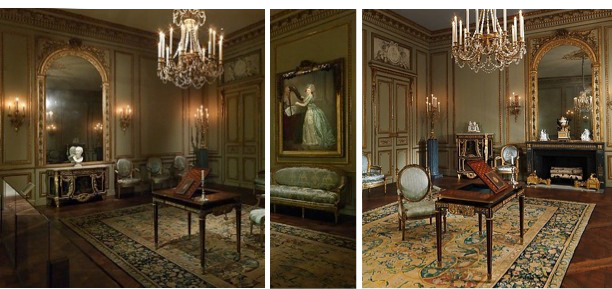Uses of Space

Photo editing reveals the original, more condensed size of the Tessé Room.
This site investigates how a space like the Tessé Room was used. The concept of use changes how we can think about the ownership, maintenance, and creation of the sorts of things displayed in the room.
The arts represented in the Tessé Room – including furniture, metalwork, paneling, mirrors, tapestries, rugs, and porcelains — began to be called “decorative arts” during the nineteenth century. They are, however, more accurately understood as “useable,” because they were decorative only at the highest luxury end of production, and not even always then. On the contrary, it was their use that posed the most fundamental design challenges to those who created them.
The total interiors of the eighteenth century have always been appreciated for their exquisite appearance. Recent scholarship has proposed that we extend this appreciation by taking into account the use of arts by owners and their guests. Some scholars have argued that social rank was performed through the correct yet painstaking use of delicate or kinetic furnishings. Other scholars have argued that desks, especially, enabled a new freedom of thought, which extended to women.
Inspired by such ideas, we also ask how the useable arts affected the mentality of servants. They too spent long hours occupied by the useable arts, because it was they who were obliged to clean, repair, and prepare them for owners. A space like the Tessé Room was occupied at many times of day by more servants than owners.
While the style and ornamentation of the useable arts undeniably summoned the creative talents of their makers, so did function. Artisans created the material and technical conditions of individualism, privacy, and consumer choice. During their careers they spent designing and executing the useable arts, they absorbed Enlightenment values with their hands or though their tools.
In their different ways, servants and makers had as intimate a relationship with the uses of Enlightenment spaces and objects as owners.
